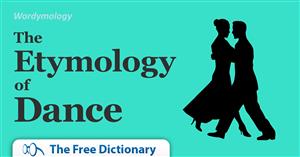Mood
What is mood?
Grammatical mood refers to the way in which a verb is used to express certain meaning by the speaker or writer. In linguistics, moods are broken down into two main categories: realis moods (expressing what is real or true) and irrealis moods (expressing what is unreal, hypothetical, or untrue).
Realis moods (the indicative mood)
The indicative mood is a type of grammatical mood used to express facts, statements, opinions, or questions. It is the only realis mood used in English.
This mood is used in all verb tenses to form declarative sentences (i.e., statements or declarations) or interrogative sentences (i.e., questions). For example:
- “She graduated last year with a doctorate in neuroscience.” (declarative sentence in the past simple tense)
- “He is taking his exam at the new testing center.” (declarative sentence in the present continuous tense)
- “Are you going to give your speech tomorrow?” (interrogative sentence in the future simple tense)
The indicative mood is the most commonly used grammatical mood in English.
Irrealis Moods
The term irrealis means “unreal,” and it refers to grammatical moods that reflect what is not actually the case.
There are two irrealis moods in English: the subjunctive mood and the imperative mood.
Subjunctive Mood
The subjunctive mood refers to verbs that are conjugated a certain way to describe hypothetical or non-real actions, events, or situations. This is in comparison to the indicative mood, which is used to express factual, non-hypothetical information.
We most commonly use the subjunctive mood to express wishes; to express commands, suggestions, requests, or statements of necessity; or to describe hypothetical outcomes that depend on certain conditions.
For example:
- “I wish I didn’t have to go to work.” (wish)
- “He demanded that they leave the room at once.” (command)
- “I recommend that she study harder next time.” (suggestion)
- “I ask that the audience be completely silent during the demonstration.” (request)
- “It’s necessary that we be vigilant to avoid another disaster.” (statement of necessity)
- “If I had been more prepared, I would have passed that test.” (hypothetical condition)
There are very specific ways we conjugate verbs to create the subjunctive mood; continue on to that section to learn more.
Imperative Mood
Although we can use the subjunctive mood to express commands or requests, it is becoming less common in modern English. Instead, we usually use the imperative mood to form imperative sentences when we want to issue direct orders, commands, or general instructions. It is considered an irrealis mood because the action being demanded has not actually happened (and might not happen).
When we make an imperative sentence, we use the infinitive form of the verb (without to), and we omit the subject of the verb.
For example:
- “Turn off the light before you leave.”
- “Go to bed!”
As you can see, there are no subjects in the sentences above. However, we do often use a noun of address (also called a vocative) instead, which is a noun or noun phrase used to address the person to whom the command is directed. For example:
- “John, please turn out that light.”
- “Stand up, Janet.”
- “Be quiet, sir!”
- “You there, pay attention!”
To learn more about how we form and use sentences in the imperative mood, see the section Imperative Sentences in the chapter on Sentences.
Other moods
The three true moods in English are the indicative, the subjunctive, and the imperative.
However, there are two sub-categories that are sometimes described as moods in different grammar guides: the “emphatic mood” and “infinitive mood.” While we do not consider them to be discrete grammatical moods in this guide, they are worth mentioning for general reference.
Emphatic mood
The “emphatic mood” refers to the use of the auxiliary verb do to add emphasis to a verb that would otherwise not require an auxiliary.
We usually use emphatic do to stress the fact that something is the case.
For example:
- “Yes, I do know that we are meeting your parents tonight.”
- “Well, she does have a Ph.D., after all.”
We can also use do to add emphasis to demands or requests, as in:
- “Do be careful, John.”
- “Oh, do be quiet!”
However, the use of do in such imperative sentences is now rather formal and old fashioned.
Infinitive mood
The “infinitive mood” merely refers to a verb being put into its infinitive form—that is, the base form with the particle to. For example:
- “To be loved is a wonderful thing.”
In this case, the infinitive to be forms the infinitive phrase to be loved, which is used as a noun and the subject of the sentence.
Infinitives have a variety of functions in a sentence, but none of them is as a true verb, which is why we do not consider the so-called “infinitive mood” as belonging to any of the true grammatical moods in English.
Chapter Sub-sections
Get all volumes of The Farlex Grammar Book in paperback or eBook.

